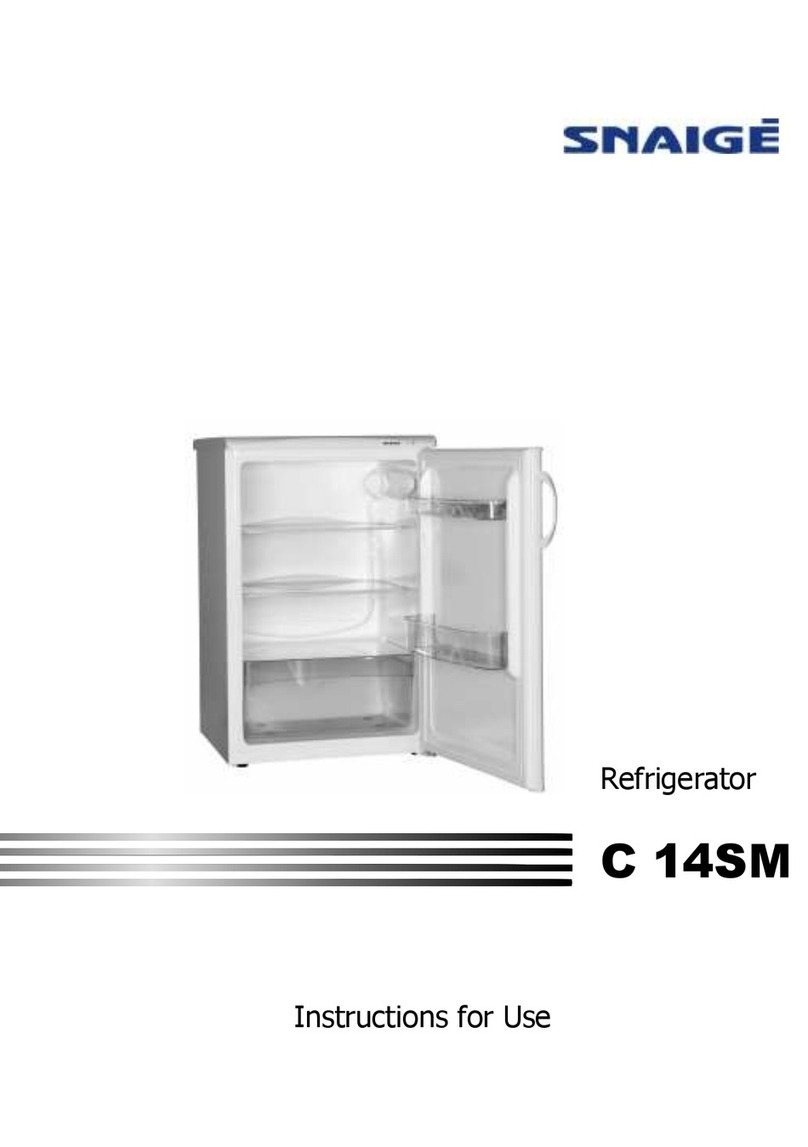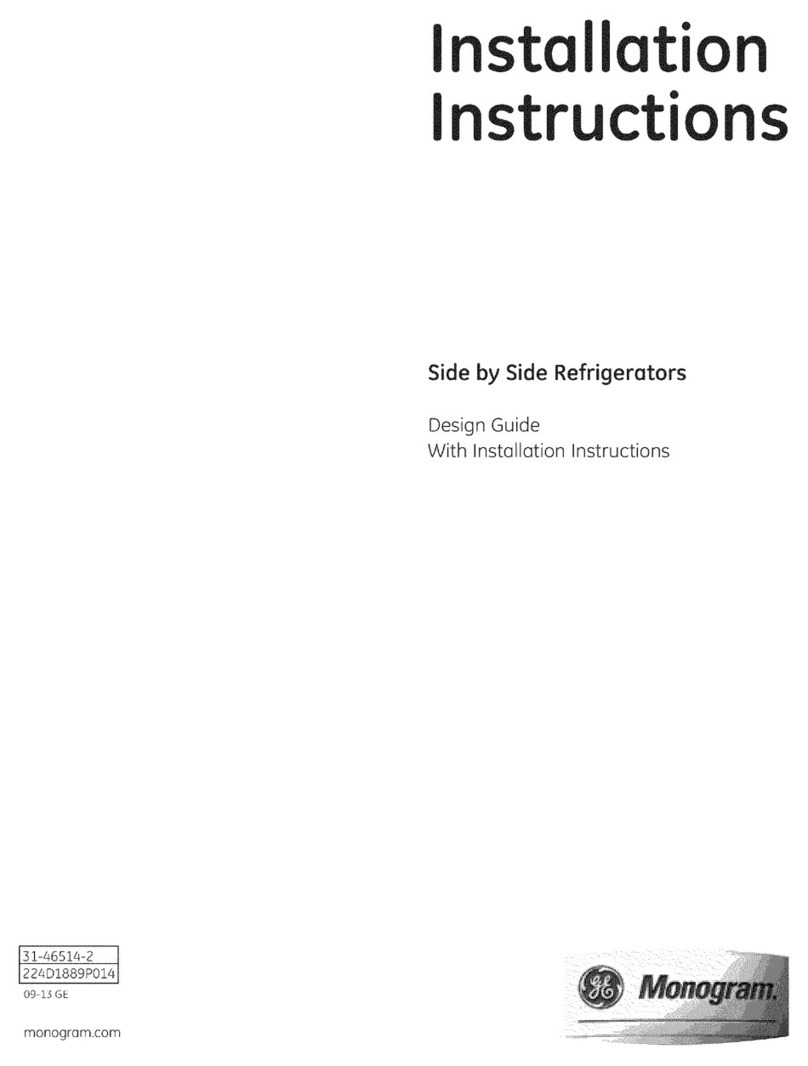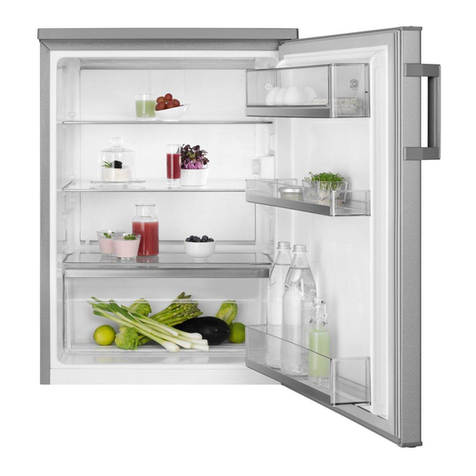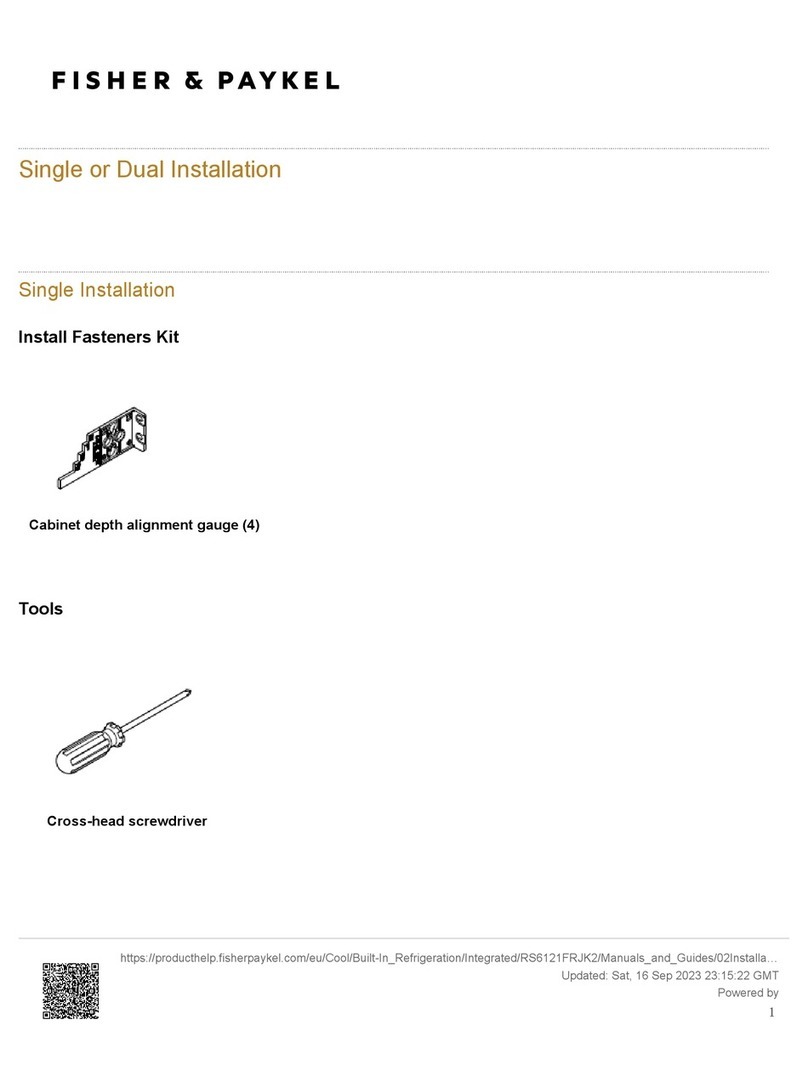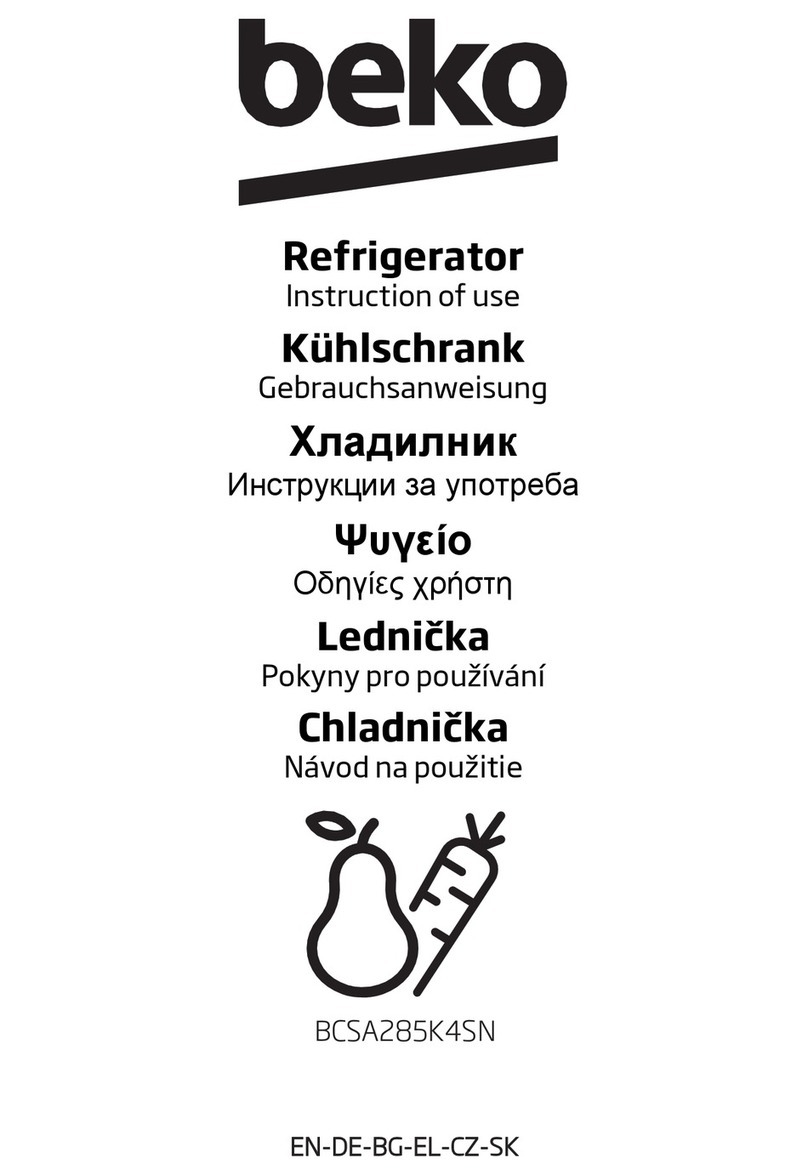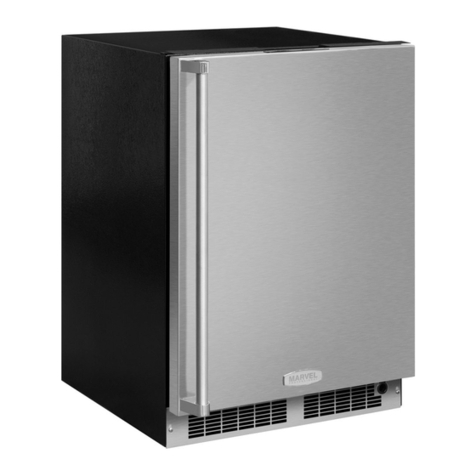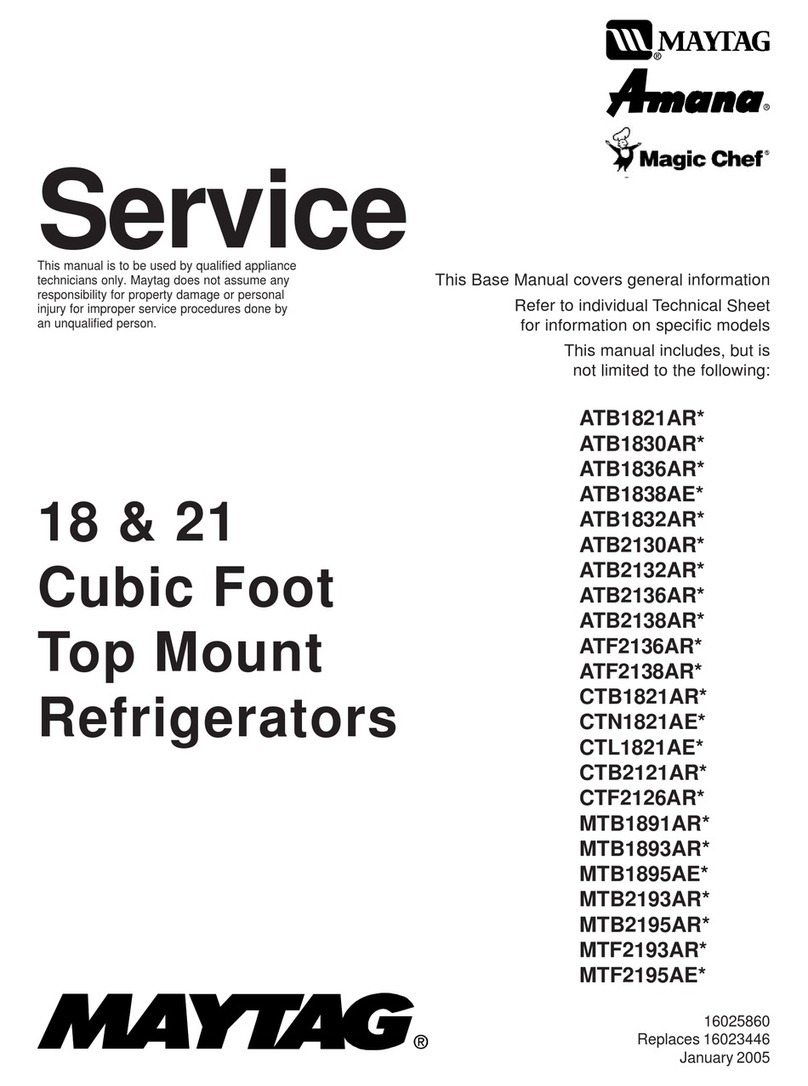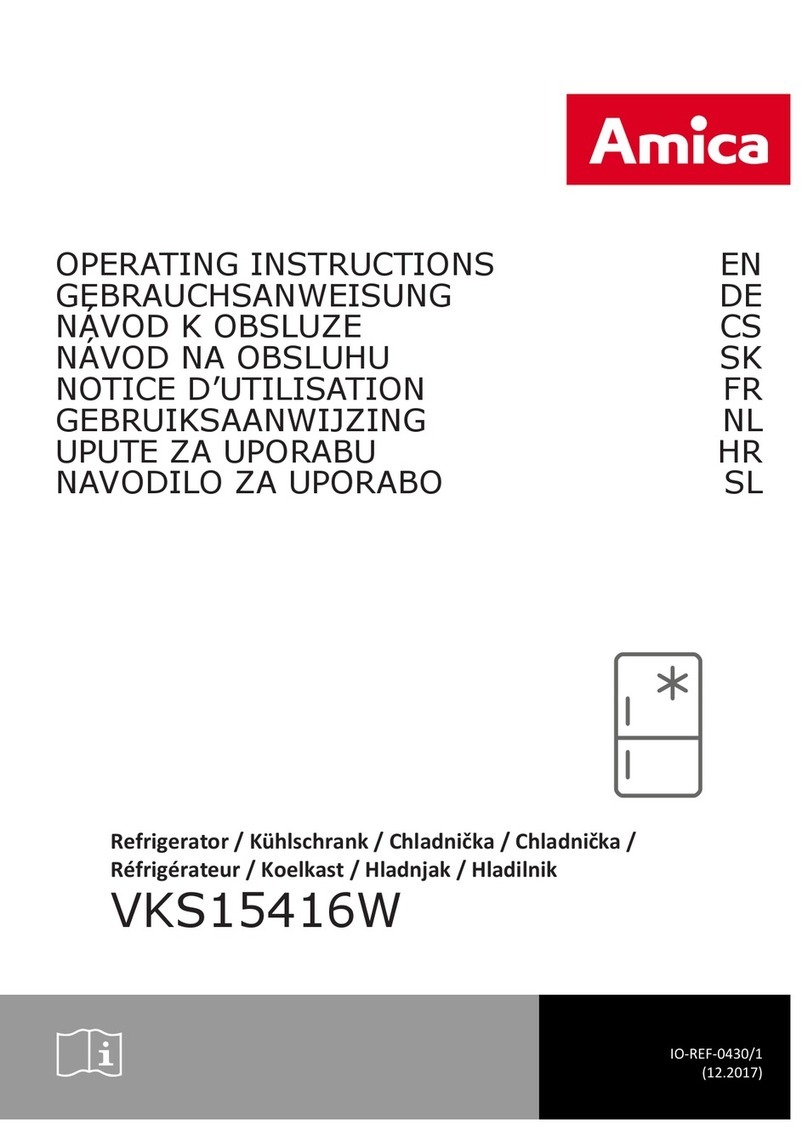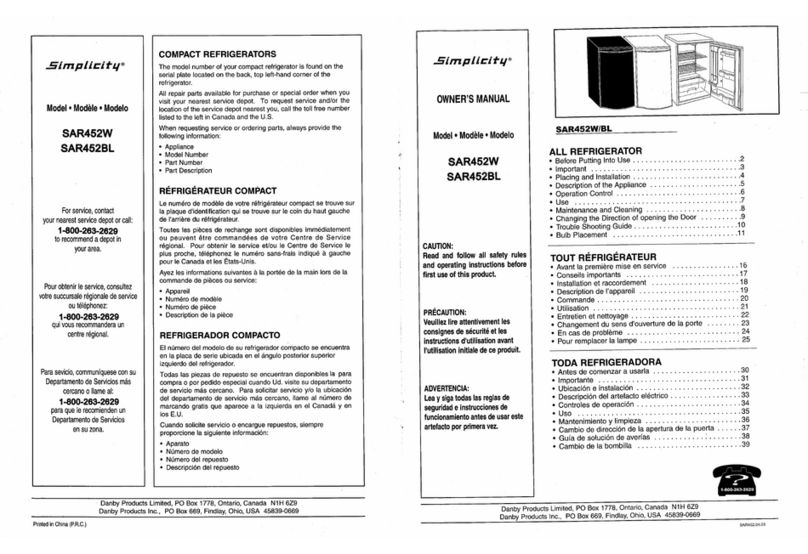SNAIGE MD40DD User manual

0
MEDICAL REFRIGERATOR
Instruction for use
MD40DD

1
DEAR CUSTOMER!
CAREFULLY READ THE INSTRUCTION MANUAL. If instructions are not followed,
there is a risk of injury, damage of the appliance and loss of the right to free warranty
service.
The Manufacturer shall not be held liable for damage arising from the failure to
observe the instructions contained in this manual.
Keep this manual for future reference, or to pass it over to the next user.
General information:
The refrigerator is a vertical refrigerator - showcase with a glass package door
intended for non-household use. The refrigeration appliance can be used in
pharmacies or for other activities, related with storage of medicines.
The noise emitted by the refrigerator does not exceed 50 dB (A).
The refrigerator complies with the requirements of DIN 13277.
GUIDELINES CONCERNING THE SAFETY OF USE
General safety requirements:
–WARNING: Do not cover the ventilation openings of the appliance.
–WARNING: Do not use electrical appliances inside the storage compartments
of the appliance, unless they are of the type recommended by the manufacturer.
–WARNING: Do not use any mechanical tools or other/chemical agents other
than those recommended by the manufacturer to speed up the defrosting
process.
–WARNING: When positioning the appliance, ensure the supply cord is not
trapped or damaged.
–WARNING: Do not locate multiple portable socket-outlets or portable power
supplies at the rear of the appliance.
–WARNING: Disposal of the appliance should be according to national rules.
WARNING: Do not damage the appliance refrigeration system. It contains
the refrigerant gas R600a. If the refrigeration system is damaged:
•Do not use any open flame.
•Avoid sparks - do not turn on/off any electrical appliances or lighting fixtures.
•Immediately ventilate the room: air the room in which the appliance is placed for
a few minutes (the size of the room for a product containing isobutane/ R600a
must be at least 4 m3).

2
C-Pentane is used as blowing agent in the insulation foam and it is a
flammable gas.
–This appliance is designed only for cooling and storing of pharmaceuticals.
–This appliance is not designed for storage of explosives, such as aerosols with
flammable gases.
–It is prohibited to store petrol and other flammable liquids near the appliance.
–Do not allow children to play with the packaging material from the appliance.
–Do not allow children to play with the appliance
–This appliance can be used by children aged from 8 years and above and persons
with reduced physical, sensory or mental capabilities or lack of experience and
knowledge if they have been given supervision or instruction concerning use of the
appliance in a safe way and understand the hazards involved.
Requirements for the connection to the mains:
–The appliance should ONLY BE CONNECTED TO AN EARTHED SOCKET
INSTALLED IN ACCORDANCE WITH THE REGULATIONS. Make sure that the
supply voltage corresponds with the voltage marked on the rating label. This
product complies with all binding CE labelling directives. The earthed electrical
socket by which the appliance is connected to the mains should be in an
accessible place. It is a legal requirement that the appliance is properly earthed.
The manufacturer will not be held liable for any damage or injury which may
result from the failure to fulfil this requirement.
–It is mandatory to replace a damaged power cord with a proper one of the same
type as the one used by the refrigeration appliance manufacturer to prevent
damage to health an property
–To avoid the exposure to danger, always have faulty cable be replaced only by
the manufacturer, by our customer service or by a qualified person and with a
cable of the same type.
–It is forbidden to readjust or modify any parts of the unit. It is crucial not to
damage the capillary tube visible in the compressor recess. The tube may not
be bent, straightened or wound. If the capillary tube is damaged by the user the
guarantee will be void.
–Do not use adapters, multiple sockets and two-wire extension leads. If it is
necessary to use the extension lead, it must be equipped with a protection ring
and a single socket and must have a VDE/GS safety certificate. If an extension
lead is used (with a protection ring and safety certificate), its socket must be

3
located at a safe distance, away from the sinks, and must not be in a place where
it could be flooded by water or waste water.
–The frequency and power of the electricity supply in your house must conform
to the general data parameters of the appliance as it is shown in the product
label.
–When positioning the appliance, be careful that the electrical cord isn’t squeezed
in order to avoid damaging it. Do not store heavy objects such as cooling devices
or other devices next the appliance in such a way that they could squeeze and
damage the electrical cord. This can cause a short circuit and a fire.
–Make sure that the plug of the electrical cord is not squeezed by the back wall
of the appliance or otherwise damaged. A DAMAGED PLUG CAN BE THE
CAUSE OF A FIRE!
CAUTION! If the installed interior lighting or the advertising panel’s light-
emitting diode (LED) lamp for the cooling device is not functioning, contact
the maintenance and repair representative for replacements. LAMPS CAN
BE REPLACED ONLY BY THE MAINTENANCE AND REPAIR
REPRESENTATIVE
DO NOT TRY REPAIR THE APPLIANCE ON YOUR OWN. ALWAYS
CONTACT AN AUTHORIZED TECHNICIAN. TO AVOID THE EXPOSURE
TO DANGER, ALWAYS HAVE FAULTY CABLE BE REPLACED ONLY BY
THE MANUFACTURER, BY OUR CUSTOMER SERVICE OR BY
QUALIFIED PERSON WHIT A CABLE OF SAME TYPE.
Requirements for safe use:
–It is forbidden to use a technically damaged appliance.
–If the appliance is unplugged (for cleaning, moving to another place, etc.), it may
be repeatedly switched on after 15 min.
–When performing activities, such as cleaning, maintenance or moving, the
appliance must be completely disconnected from power supply (by pulling the plug
out from the socket). Do not pull on the cord, but hold the body of the plug
instead.
–Do not place heavy objects on the top of the refrigerating appliance.
–Do not place any switched on electrical devices on top of the appliance because
this may cause ignition of plastic parts.
–Do not place any dishes with liquids on top of the appliance and do not keep
flowers in vases or other liquid-filled vessels on the appliance.

4
–Do not climb on or sit on the appliance, do not lean on or hang on the appliance
doors and do not allow children to do this.
–Do not use water spray and steam to clean the appliance.
The appliance should be transported in the vertical position; do not tilt any
more than 30°. THE MANUFACTURER WILL NOT BE RESPONSIBLE FOR ANY
DAMAGE OF THE APPLIANCE THAT RESULTS FROM NON-COMPLIANCE WITH THE
INSTRUCTIONS FOR TRANSPORTATION.
INSTALLATION AND OPERATING CONDITIONS
Positioning:
•This appliance can be installed in a dry, well ventilated indoor location where the
ambient temperature corresponds to the climate class indicated on the rating plate of
the appliance.
CAUTION! Do not install this appliance in areas that are too humid or too cold.
Place the appliance away from heat sources such as kitchen stove/oven,
radiators, or direct sunlight. The appliance must not touch any pipes for heating,
gas or water supply, or any other electrical devices.
•Do not cover the ventilation holes at the top of the appliances –it must be a good air
circulation around the appliance. There should be a gap of at least 10 cm between the
top of the appliance body and any furniture that may be above it. If this requirement is
not followed, the appliance consumes more electrical energy and its compressor may
overheat.
•The appliance must stand on a level surface
and must not touch the wall. If necessary,
regulate the height of the appliance by
adjusting the levelling feet: by turning them
clockwise –the front of the appliance rises, by
turning them counter clockwise –it comes
down. If the appliance is tilted slightly
backward –the doors will close by themselves.
•If the appliance is placed in a corner, a gap of
at least 5 cm must be left between the
appliance body and the wall.
Preparing for operation:
•It is recommended to prepare the appliance for operation with a helper.
•Remove package. Lift the appliance away from foamed polystyrene base. Therefore
take out adhesive tapes from sides and simply lift the appliance up and take out the
board. Strip adhesive tapes off and open the door. Remove all the red coloured parts,
they are only used for the transportation of the appliance.

5
•When positioning the appliance in chosen location, it will move more easily into position
if you lift the front a little and incline it backward allowing it to roll on its casters.
•When placing, moving, lifting the appliance, do not hold the door handles, do
not pull the condenser at the rear part of the refrigerator and do not touch
the compressor unit.
•When installing the refrigerator, do not tilt it more than 30 ° to the intended
location.
•When placing the refrigerator in the intended place, turn the front part slightly
backwards - you can easily place the roller on the castors in the desired place.
•The appliance should not be connected to the mains until all packing and
transport materials are removed. Suitably dispose the packaging material.
First use:
•Before using the appliance for the first time, the interior and all internal accessories
should be washed with lukewarm water and some neutral soap to remove the typical
smell of a brand-new product, then dried thoroughly.
•Once the unit has been positioned, wait for about 30 minutes before it is connected
to the mains.
After connecting the refrigerator to the mains, switch on the
emergency backup power supply to the controller using switch 11
(Fig.1)
When the refrigerator is decommissioned and disconnected
from the mains, it is necessary to disconnect the emergency
backup power supply to the controller using switch 11 (Fig.1)
If the unit has been tilted more than 30° during transport: Wait at least
4 hours before connecting the appliance to the power supply. If this is
not done, the appliance compressor may fail.
The products can be placed in the refrigerator when its internal temperature
reaches + 5 ° C.

6
DESCRIPTION OF THE APPLIANCE, BASIC PARTS
1
Electronic control panel with
buttons
8
Condenser
2
Door opening switch
9
Compressor
3
Advertising panel
10
Tray for collection of the defrost
water
4
Interior lighting unit
11
Emergency power disconnect switch
5
Fan
12
External alarm connection
6
Shelves
13
RS485 network connection
14
Security controller
When the appliance is switched on, the fan starts and works together with the
compressor.
When the door is opened, the fan switches off and the interior lighting of the refrigerator
turns on. If necessary, the interior lighting can be switched on for permanent lighting.
The refrigerator has a second safety controller that prevents the
temperature in the refrigerator from falling below + 2 °C.
NOTE. The technical data of the appliance can be found on the rating label attached to
the inside wall of the appliance. For more information about the appliance, scan the QR
code on the enclosed energy label and / or visit the official website of the product
database: https://eprel.ec.europa.eu

7
DESCRIPTION OF THE ELECTRONIC CONTROLLER
TEMPERATURE ADJUSTMENT
Electronic controller has the following functions:
1. Temperature recording and alarm recording functions;
2. Transfer of saved data to a USB storage device (USB storage device is supplied
with the refrigerator);
3. Emergency 12 hour power supply and alarm function;
4. Setting the maximum allowable temperature limit;
5. Setting the minimum allowable temperature;
6. Possibility to connect an external alarm system;
7. Possibility to connect to external temperature and other parameters monitoring
system XWEB (purchased separately);
„SET“ to display target set point; in programming mode it selects a
parameter or confirm an operation
„UP“ to enter fast access menu; In programming mode, scroll through
parameter codes or increase the displayed value.
„DOWN“ in programming mode it browses the parameter codes or
decreases the displayed value.
„DATA“ exporting data to a USB storage device
„LiG“ to switch the light
„REC“ the data logging inside the controller is factory activated.
Shutdown (password protected), contact service.
Controller LED functions and description
LED
Mode
Function
On
Compressor enabled
Flashing
Anti-short cycle delay enabled
On
Defrost enabled
Flashing
Drip time in progress

8
On
Fan enabled
Flashing
Fans delay after defrost in progress
On
There are alarm logs
On
Recording activated
On
Battery status OK
Flashing
Charging problem or battery failure
On
Measurement unit
Flashing
Programming phase
When the appliance is connected to the mains for the first time, the electronic controller
will display the current temperature inside the appliance (hereinafter referred to as the
ACTUAL temperature).
When connected to the mains, switch on the emergency backup power supply to the
controller using switch 11 (Fig.1) on the back of the refrigerator. The symbol
lights up on the controller display.
With the help of emergency backup power only the controller, that
registers the temperature change in the refrigerator, operates. All the
other electrical components of the refrigerator (compressor, fan,
lighting) do not work.
Set the date and time settings, disable the real-time menu (the RTC) alarm.
BEGIN
+
1. Enter the Programming Mode pressing both
„SET+DOWN“keys for 3sec.
2. Use the UP or „DOWN“button till the „CLO“menu
is displayed
Display
Press SET to enter the settings menu
Display
1. HUr =hour → press „SET“to modify/confirm. „UP/DOWN“–to
modify the parameter.
2. Min =minutes → press „SET“to modify/confirm. „UP/DOWN“–to
modify the parameter.
3. dAy =Day of the month → press „SET“to modify/confirm.
„UP/DOWN“–to modify the parameter.
4. Udy =Day of the week → (Sun, Mon, Tue, Ued,thE, Fri, Sat) press
„SET“to modify/confirm. „UP/DOWN“–to modify the parameter.
5. Mon =month → press „SET“to modify/confirm. „UP/DOWN“–to
modify the parameter.
6. yEA =year →press „SET“to modify/confirm. UP/DOWN –to modify
the parameter.
EXIT
+
Press both SET and UP together The audible alarm is
switched off at the same time. Exiting the menu takes
place automatically without activating any button for
about 10s

9
The refrigerator is unadjustable and the appliance is set at a
temperature of +5 °C at the factory.
The set temperature can be changed by the manufacturer or SNAIGĖ SERVISAS official
representatives.
Electronic controller will always display the actual temperature in the
refrigeration unit instead of the set temperature.
NOTE. The electronic controller on the display shows the variable air temperature near
the evaporator and is used to control the refrigeration unit. I.e. the controller displays the
actual average temperature, so when storing products that are sensitive to
temperature changes, it is recommended to use additional temperature measuring
devices (positioned at different device heights) for optimal temperature selection.
Temperature recording and data transfer to a USB key
To export log data to a USB key, follow these steps:
1. Insert the supplied product-specific USB storage media that comes with the
refrigerator;
2. Press the „DATA“ button until "dat" appears;
3. The controller starts transferring data to the USB key;
4. The message "Lod" will be displayed on the screen during data export, and then
a message „Alr“;
5. When the data transfer is complete, the following message will be displayed:
–„End“ if everything's okay
–„Err“ if the data transfer failed.
The controller keeps the logs last:
a) 100 alarm entries along with the date and duration of the event „ALARM.txt“
b) A summary of temperature measurement records along with the date and time
of the recording „DATA.txt.“
CLEANING AND CARE
THE REFRIGERATING APPLIANCE DEFROSTS AUTOMATICALLY. Drops of ice that form
on the back wall of the refrigerator compartment thaw during the time the compressor is
not working. Indication appears on the screen of electronic controller. Thaw water runs
down the thaw water runoff channel to the tray on top of the compressor, where it
evaporates. CLEAN THE APPLIANCE.
Warning: Be sure to unplug the battery before cleaning using the
on / off button on the back of the refrigerator and unplug it
from the electrical outlet.

10
•Protect the appliance inner surfaces and plastic parts from fats,
acids and sauces. In case of accidental spills –immediately clean
with warm soapy water or dishwashing detergent. Wipe dry.
•Regularly clean the hermetic gaskets of the doors. Wipe dry.
•At least once a year clean dust away from the back part of the
appliance body and the compressor. A soft brush, electrostatic
cloth or vacuum cleaner may be used for cleaning.
•Regularly clean the thaw water channel space in the refrigerator
with a special cleaner for that purpose (see fig.).
•Clean the glass with glass cleaner.
•DO NOT use detergents containing abrasive particles, acid, alcohol or benzene for
cleaning the appliance inner and outer surfaces. Clean the glass with glass cleaner
•DO NOT use for cleaning cloths or sponges that have coarse surfaces intended for
scrubbing.
•DO NOT use spray ice solvents.
•DO NOT clean with compressed air / steam.
•If the appliance is to be left switched off for an extended period switch off the mains
voltage, disconnect the battery using the On/Off switch, clean, dry it out and leave its
doors open to avoid mould.
CHANGING THE OPENING DIRECTION OF THE DOORS
It is recommended that changing the opening direction of the doors should be done with
a helper. You will need two spanners No. 8 and No. 10 and a head screwdriver.
When changing the opening direction of the doors, YOU CAN NOT lay the
refrigerator horizontally!

11
Before you start, please note the following:
∙Always ensure that the correct number of washers is used on all hinge bolts and screws.
∙So that the doors can close tightly against the frame, take the utmost care that they are
properly aligned during reassembly.
Do the actions below in the order they are listed (see fig.):
1. Turn off the appliance and pull the plug out of the electricity supply socket.
2. Turn the refrigerator at a 45° angle.
3. Remove the two screws (8) and separate the bottom bracket (10) together with the
washers and gaskets (9) on the small axle.
4. Remove the two screws (7)and separate the bracket (5) and the gasket (6).
5. Separate the door (4).
6. Remove the 4 screws (1) at the top of the advertising panel, separate the top of the
advertising panel (11), remove the front part of the advertising panel (12), and then
remove 4 screws (13) and separate the advertising panel; then loosen the 2 screws
(14) and transfer the upper bracket (15) to the other side. Assemble the advertising
panel in reverse order.
7. Turn the door 180°, insert the upper axle and mount the door on it.
8. Remove the mounting screws (2)from the door, separate the handle (3) and attach
it by screwing the screws into the holes on same side.
9. Using the supplied washers and gaskets, attach the lower bracket (10) on the
opposite side of the cooler, but first attach the bracket axle to the door. Screw in the
bracket (5) on the opposite side of the cooler.
If the unit has been tilted to more than 30°, wait for about 4 hours before re-
connecting it to the mains.
NOTE. Door position is not reversible for refrigerators with mechanical lock.
OPERATION PROBLEMS AND THEIR SOLUTIONS
•The appliance is plugged in to the mains but it does not work. Check if your
house electricity supply installations are in order. Check if the plug is correctly inserted
into the electricity supply socket.
•The noise has become louder. Check if the appliance is standing stable, on a level
place. To make it level, regulate the front feet. Check if the appliance is not touching
any furniture and if no part of the refrigeration system at the back part of the appliance
body is touching the wall. Pull the appliance away from any furniture or walls. Check
if the cause of increased noise isn’t due to bottles, cans in the appliance that might be
touching each other.
•Water has appeared at the bottom of the refrigerator compartment. Check
whether a thaw water channel space isn’t blocked. Clean the thaw water channel space
with a cleaner intended for that purpose.
•When the appliance door is opened, the rubber sealing gasket pulls out. The
gasket is smeared with sticky foodstuffs (fat, syrup). Clean the sealing gasket and the
groove for it with warm water containing soap or dishwashing detergent and wipe dry.
Put the rubber sealing gasket back into the place.

12
•High temperature in appliance, the compressor operation pauses are short.
Ascertain whether the appliance door/doors are shutting tightly, whether the door
wasn’t kept open longer than necessary when taking out or putting in foodstuffs or
whether a large amount of warm food was placed in the appliance.
•The top of the appliance has condensation on it. The ambient relative air humidity
is above 65 %. Ventilate the room where the appliance stands and if possible remove
the cause of the humidity.
Electronic controller indication values
Indication
The reason
What to do?
„
PF1
"
Defective control sensor
Contact Snaigė Service
„
PF2
"
Defective evaporator
sensor
Contact Snaigė Service
„
PF3
"
Defective temperature
registration sensor
Contact Snaigė Service
„HA1“
High temperature
Check operation of the refrigerator,
ambient temperature.
„LA1“
Low temperature
Contact Snaigė Service
„
dA
"
Open door alarm
Close the door tightly
„CA"
Severe alarm
Contact Snaigė Service
„EA“
External alarm
Contact Snaigė Service
•The alarm message is displayed as long as the alarm condition persists.
•All alarm messages are displayed alternately with the internal temperature, except for
„PF1“, which flashes.
•The visual indication of all faults is accompanied by an audible signal. This audio signal
can be turned off by pressing any button.
•Refrigerator has the possibility to connect an external emergency alarm.
ENVIRONMENTAL PROTECTION INFORMATION
Important Note:
This appliance is marked according to the European directive 2002/96/EC on Waste
Electrical and Electronic Equipment (WEEE). By ensuring this product is disposed of
correctly, you will help prevent potential negative consequences for the environment
and human health, which could otherwise be caused by inappropriate waste handling
of this product.
The symbol on the product, or on the documents accompanying the
product, indicates that this appliance may not be treated as household
waste. Instead it shall be handed over to the applicable collection point
for the recycling of electrical
and electronic equipment.

13
A rechargeable battery is installed in the appliance.
The battery must be removed when you wish to dispose of the appliance and sent for
separate waste treatment for batteries.
Do not damage or short circuit the battery.
Disposal must be carried out in accordance with local environmental regulations for
waste disposal. For more detailed information about treatment, recovery and
recycling of this product, please contact your local authority, your household waste
disposal service or the retailer where you purchased the product.
Our packaging are made of environmentally friendly materials, which can be reused:
● The external packaging is made of cardboard/foil
● The FCKW free shape of foamed polystyrene (PS)
● Polyethylene (PE) foils and bags
The refrigerants and foaming agents, which are 100% free of FCKW and FKW have been
used for manufacturing our product. Therefore we are helping to protect the ozone layer
and prevent the increase of greenhouse effects. Also, the innovative technology and
environmentally friendly insulation help in reducing energy consumption.
WARRANTY SERVICE
IN THE EVENT OF A MALFUNCTION OF YOUR REGRIGERATOR, MAKE SURE IF YOU
CANNOT REMOVE THE CAUSE OF THE MALFUNCTION YOURSELF. If you are unable to
solve the problem yourself, contact your nearest Refrigeration Service Representative by
phone or in writing. Be sure to indicate the model (Typ/Тип and MODEL) and number
(Ser.No/Фабрик Но) of the refrigerator. You will find this information on the product label
affixed to the inside wall of the refrigerator.
ATTENTION BUYERS!
When purchasing the refrigerator, check the operation of the product to make sure that
the appliance is complete. READ THE INSTRUCTIONS FOR USE CAREFULLY.
Notwithstanding the instructions and requirements listed in this manual, there is still a
possibility of damaging the appliance and LOSING THE RIGHT OF FREE WARRANTY.
During warranty maintenance, damaged (but not broken) parts and components of the
refrigeration aplliance are replaced free of charge.
Warranty period:
•Medical refrigerators are provided with a 12 month warranty.
Prerequisites for warranty repairs:
•It is necessary to have the original warranty card and the cash register receipt or
other document confirming the purchase and sale of the appliance from the seller
with the date of slafe of the refrigeration appliance and the store stamp. The model
and serial number of the warranty card must match the model and serial number on
the product label-sticker inside the refrigerators. There can be no corrections.

14
ATTENTION! If the date of sale is missing or is not clear, the beginning of the
warranty period is calculated from the date of manufacture of the refrigerator.
ATTENTION! The appliance must be connected to an earthed mains supply and
installed and operated in strict accordance with the manufacturer‘s instructions in the
appliance‘s operating instructions.
Warranty service is terminated:
•Due to mechanical damage to the casing or other damage, caused by the fault of the
purchaser during the transport of the refrigerating appliance. In the event of a
dispute, the packaging of the refrigeration appliance must be provided.
•Damage, breaking of parts, odors due to improper use, installation, connection to
the mains or transporting of the product without following the manufacturer‘s
instructions in the instruction for use.
•If the refrigeration appliance is operated in unsanitary conditions, the cause of
appliance failure are insects, rodents and other extraneous factors.
•If the refrigeration appliance was repaired during the warranty period by non-
SNAIGĖS SERVISAS or its official representatives.
Other conditions:
•The warranty does no cover the interior light source(s) and internal plastic
(components) of the appliance.
•If during the warranty period of the appliance, the purchaser refuses the device, or
requests that it be replaced when the defect in the appliance can be rectified, the
purchaser must reimburse the company for the losses caused by returning or
replacing the appliance.
•The warranty period for a replaced refrigeration unit is calculated from the date of
sale of the replaced appliance, which is recorded on the warranty card stating that
the appliance has been replaced.
•For calling SNAIGĖS SERVISAS or its authorized representatives when the original
warranty card is not available or when the appliance’s warranty period has expired,
the appliance has not been repaired by the above-mentioned service department
during the warranty period, the appliance has not been used in accordance to the
instructions for use, the transportation and work time are paid by the buyer according
to the rates of SNAIGĖS SERVISAS or its authorized representatives.
NGBMD40SN
2022-02-03
Table of contents
Other SNAIGE Refrigerator manuals
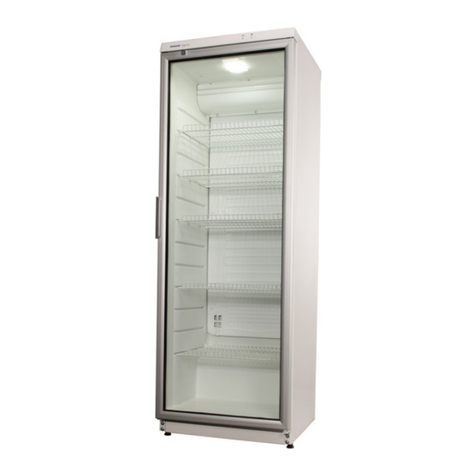
SNAIGE
SNAIGE CD29DM User manual
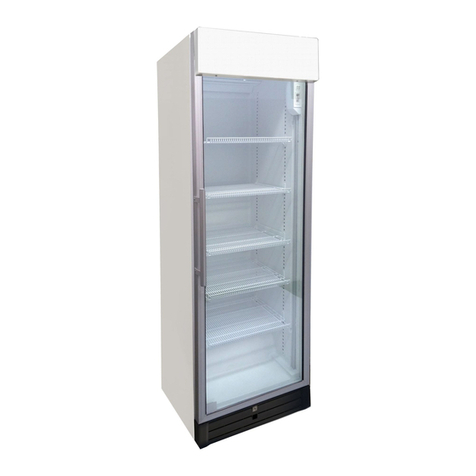
SNAIGE
SNAIGE CD48DM-S300BD User manual

SNAIGE
SNAIGE FR240 User manual
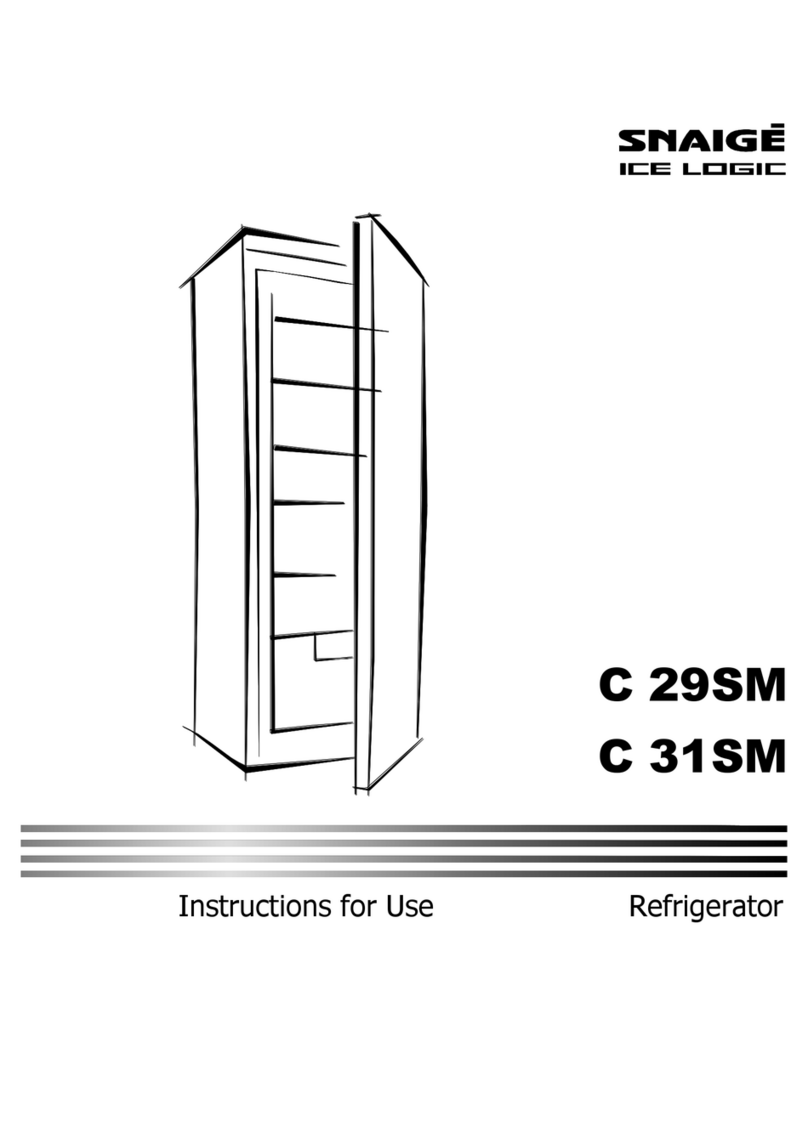
SNAIGE
SNAIGE C 29SM User manual

SNAIGE
SNAIGE CD40DM User manual
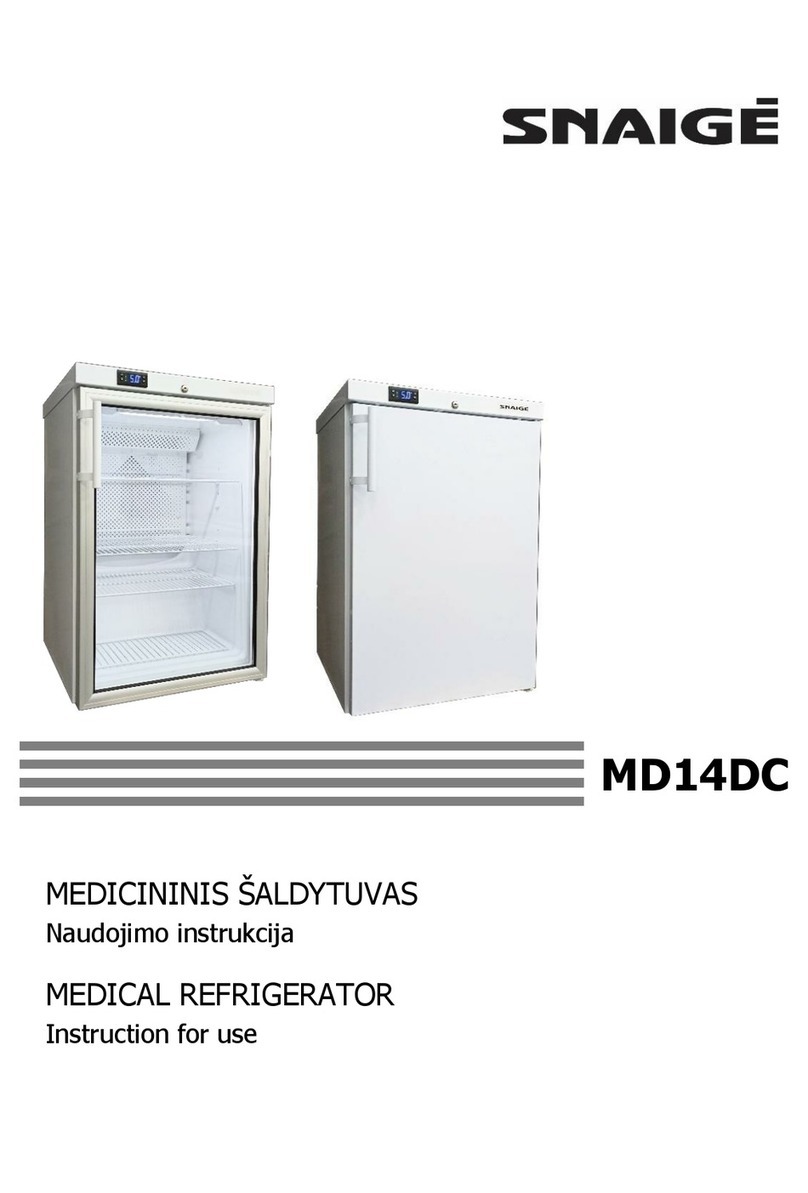
SNAIGE
SNAIGE MD14DC User manual
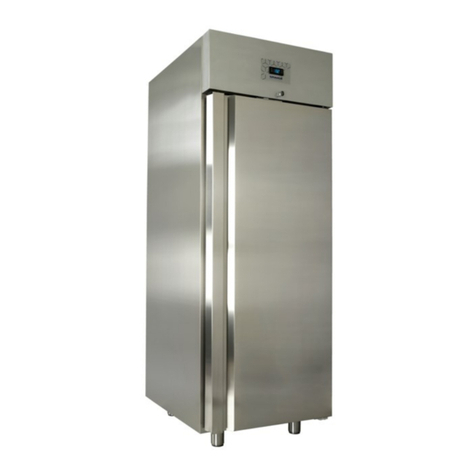
SNAIGE
SNAIGE CC70MF User manual
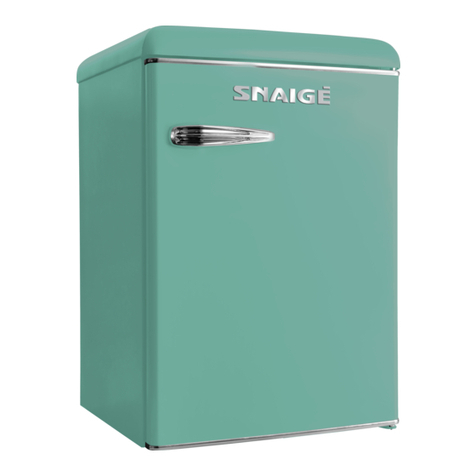
SNAIGE
SNAIGE R 13SM User manual

SNAIGE
SNAIGE MD40DC User manual

SNAIGE
SNAIGE RF62FB-TNCBNE0 User manual

SNAIGE
SNAIGE R 13SM User manual

SNAIGE
SNAIGE CD290-1004 User manual
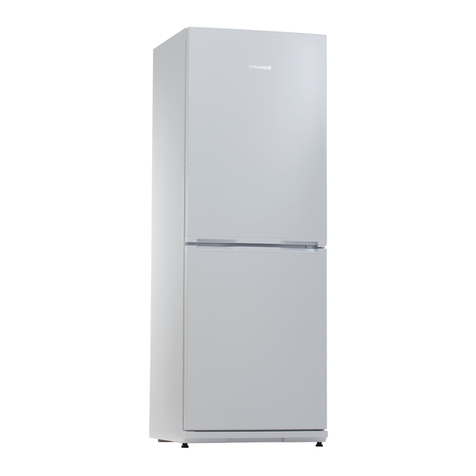
SNAIGE
SNAIGE RF27SM User manual

SNAIGE
SNAIGE FR27SM User manual

SNAIGE
SNAIGE RF31SM User manual

SNAIGE
SNAIGE WD35SM User manual

SNAIGE
SNAIGE RF53SG User manual

SNAIGE
SNAIGE SGM020P2AA Series Manual
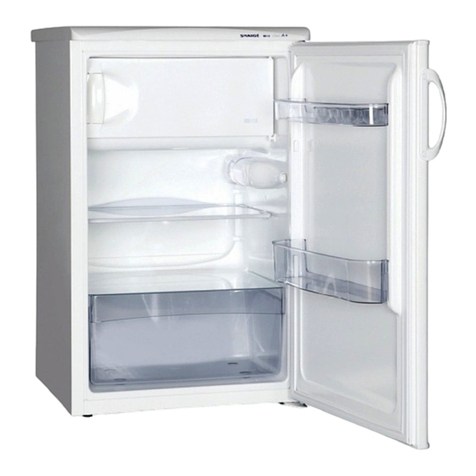
SNAIGE
SNAIGE R 130 User manual
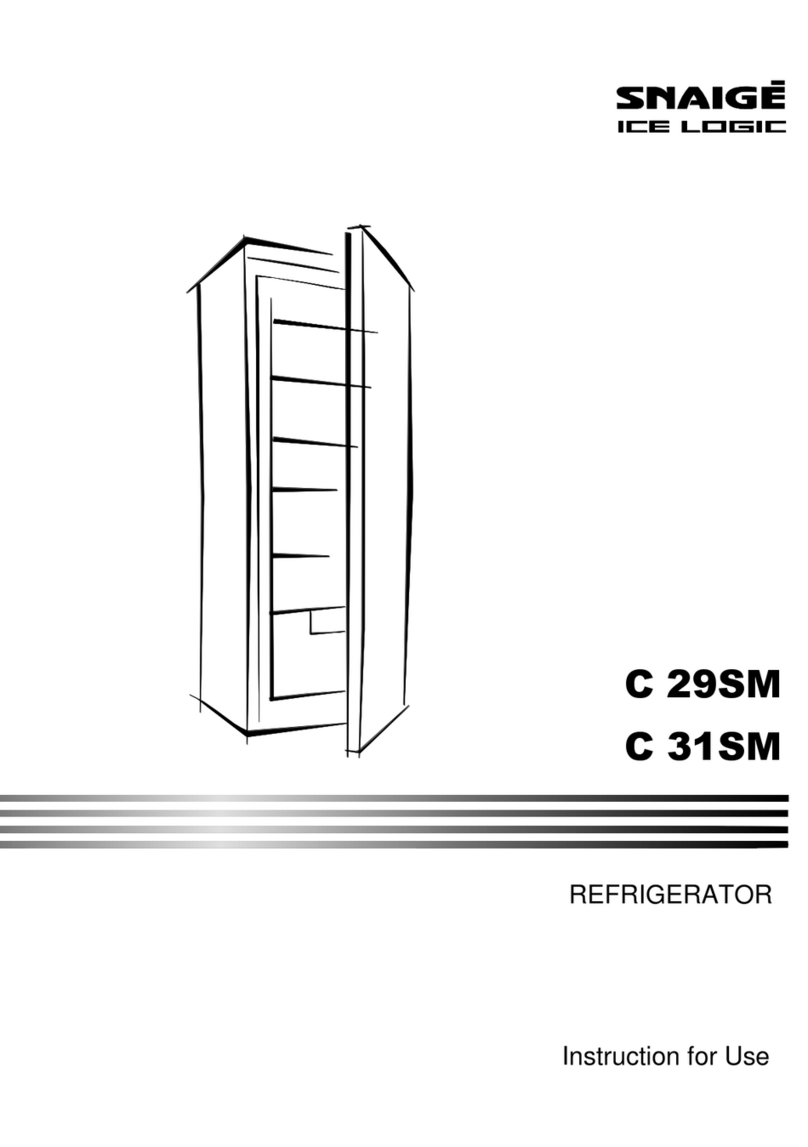
SNAIGE
SNAIGE C 31SM User manual

